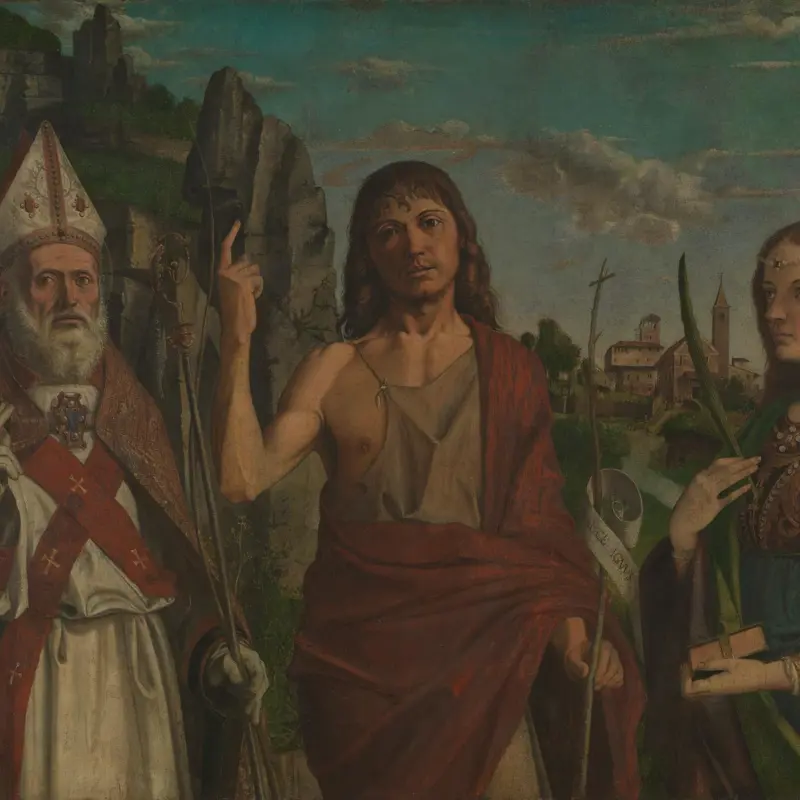Bartolomeo Montagna, 'The Virgin and Child', perhaps about 1504-6
About the work
Overview
The picture has been transferred from its original panel and placed onto a canvas, a process that has damaged the paint surface. Nevertheless, the composition, where the Virgin is placed behind a ledge and in front of a cloth, shows Montagna’s artistic debt to his teacher Giovanni Bellini. The sheen on the Virgin’s headdress as it drapes over her shoulder, catching the light, is also inspired by Bellini.
The Virgin is shown worshipping the Christ Child as he sleeps. Christ’s swaddling covers only half of his body and is intended to remind the viewer of a burial shroud; his pose – slumped against the marble wall, legs extended across the ledge – is supposed to recall his dead body in the tomb. The viewer is reminded that he is not an ordinary baby but the Son of God whose death, Christians believe, was for their salvation.
Key facts
Details
- Full title
- The Virgin and Child
- Artist
- Bartolomeo Montagna
- Artist dates
- living 1459; died 1523
- Date made
- perhaps about 1504-6
- Medium and support
- oil, originally on wood, transferred to canvas
- Dimensions
- 59 × 51 cm
- Acquisition credit
- Bought, 1881
- Inventory number
- NG1098
- Location
- Not on display
- Collection
- Main Collection
Provenance
Additional information
Text extracted from the ‘Provenance’ section of the catalogue entry in Martin Davies, ‘National Gallery Catalogues: The Earlier Italian Schools’, London 1986; for further information, see the full catalogue entry.
Bibliography
-
1951Davies, Martin, National Gallery Catalogues: The Earlier Italian Schools, London 1951
-
1986Davies, Martin, National Gallery Catalogues: The Earlier Italian Schools, revised edn, London 1986
-
2001
C. Baker and T. Henry, The National Gallery: Complete Illustrated Catalogue, London 2001
About this record
If you know more about this work or have spotted an error, please contact us. Please note that exhibition histories are listed from 2009 onwards. Bibliographies may not be complete; more comprehensive information is available in the National Gallery Library.



